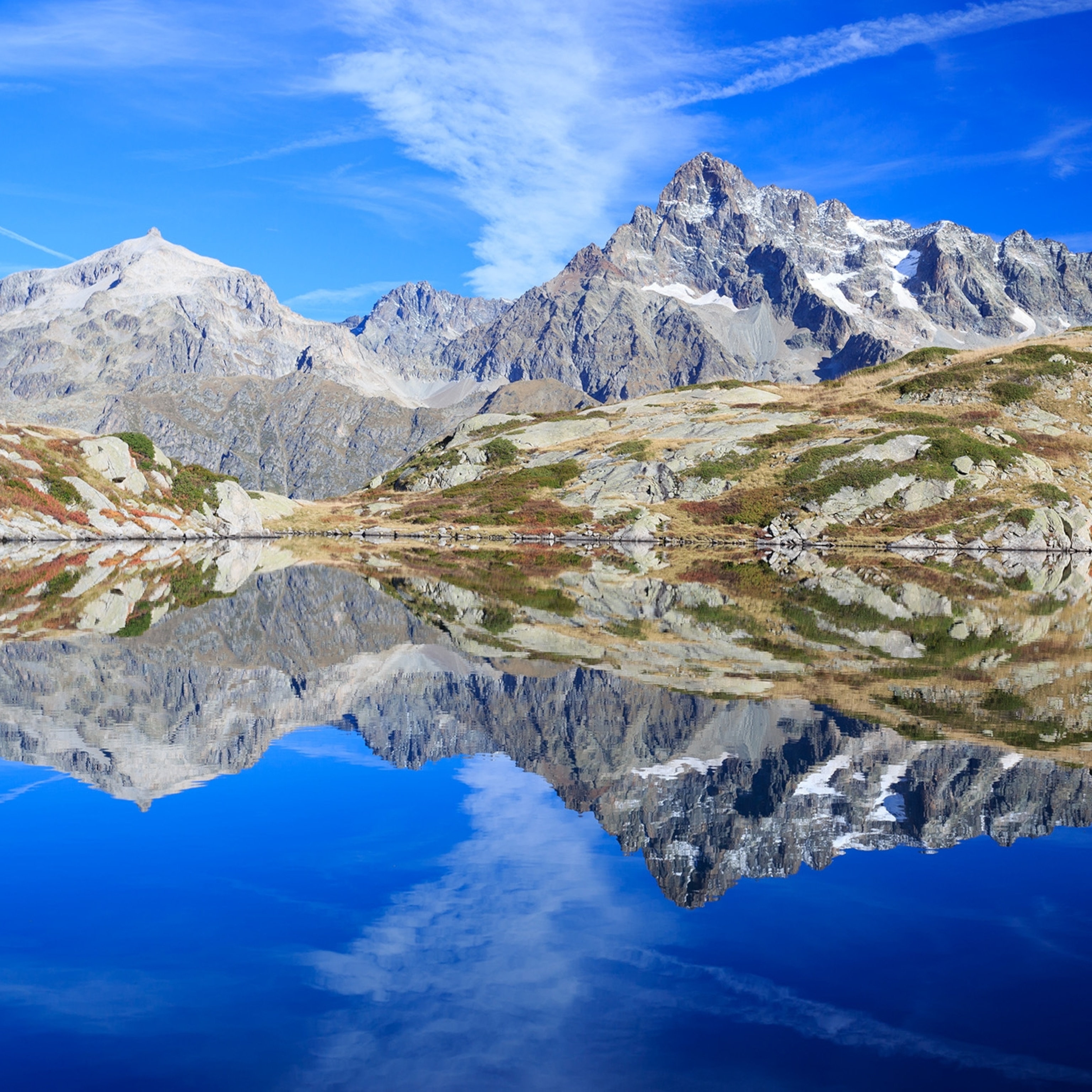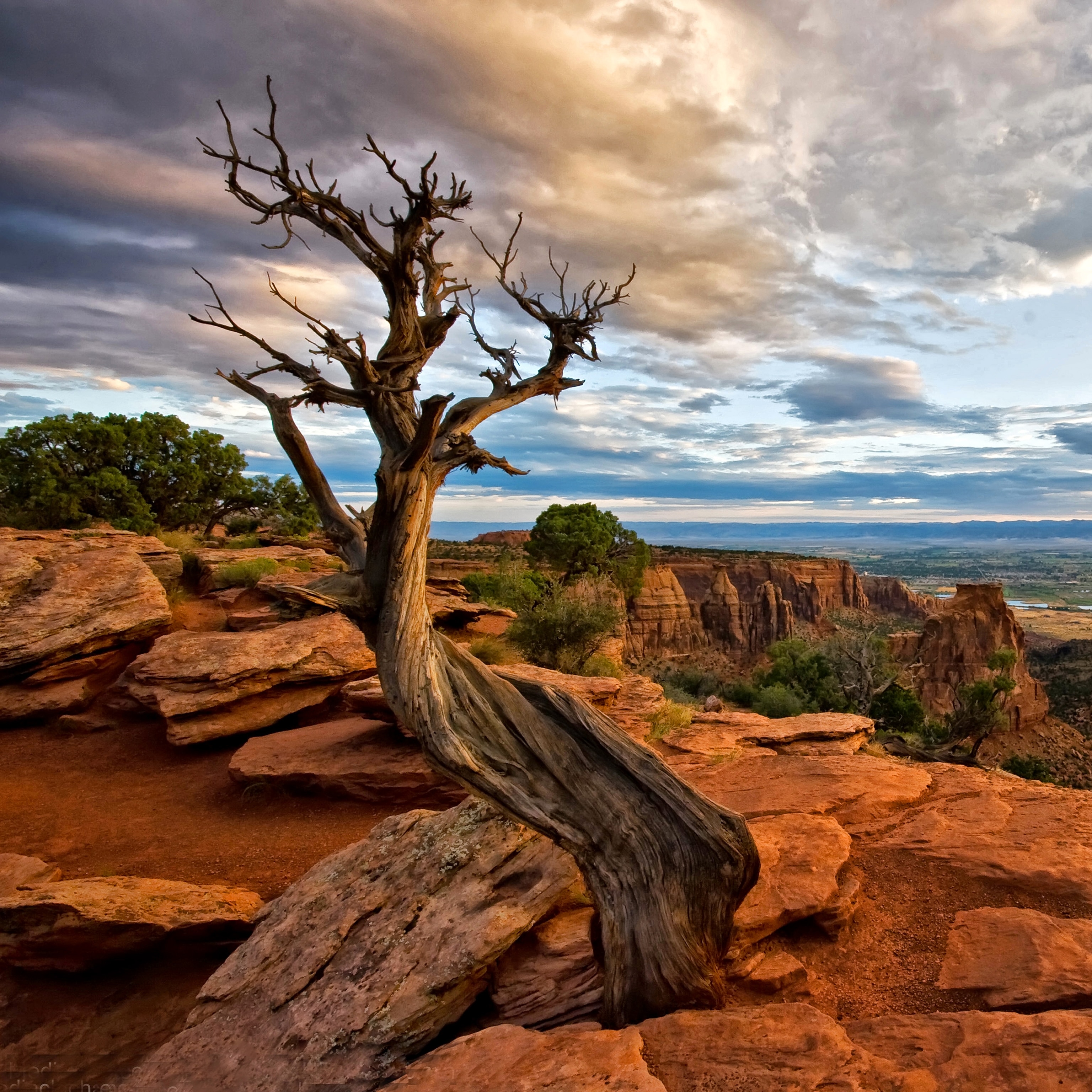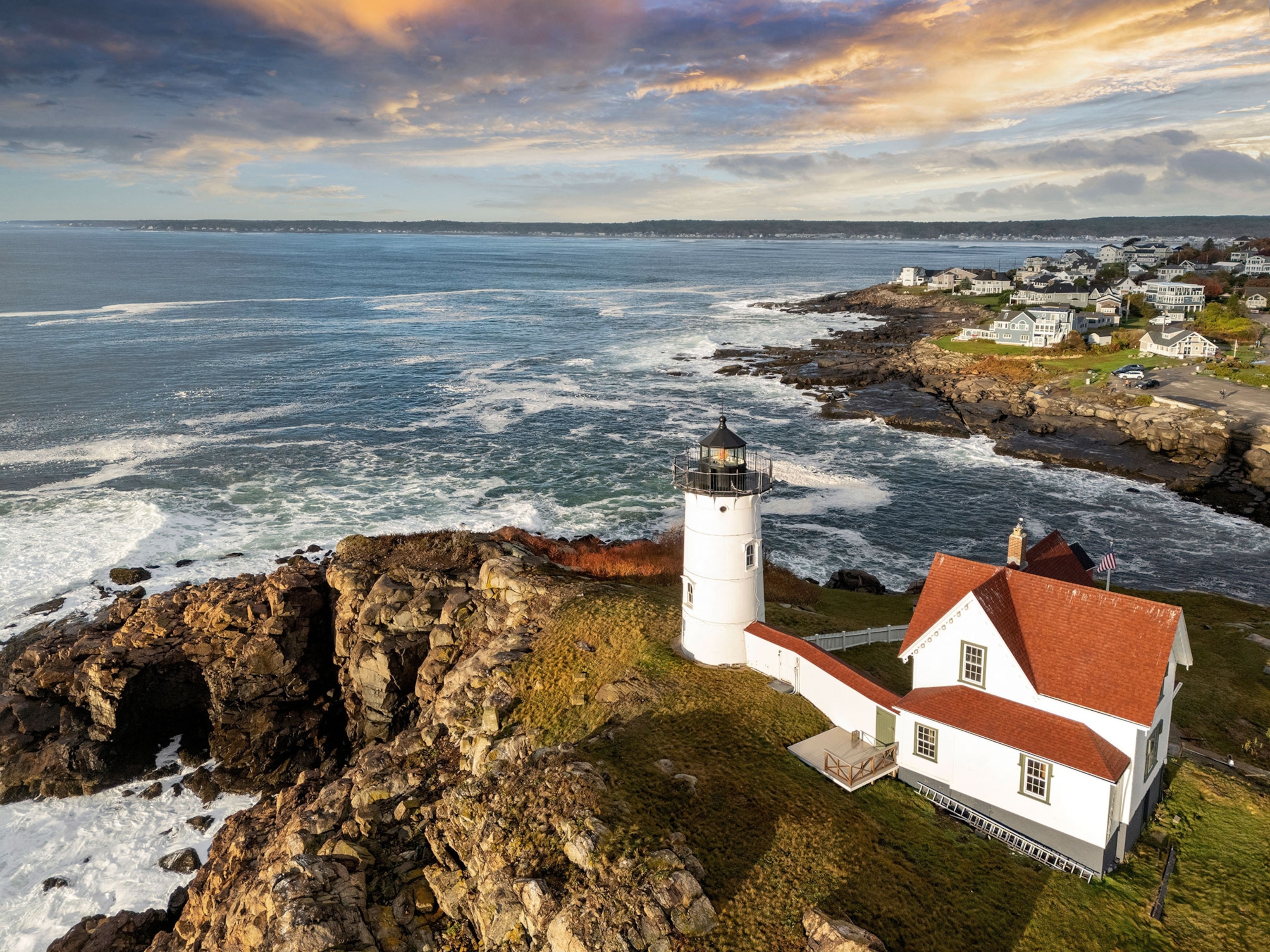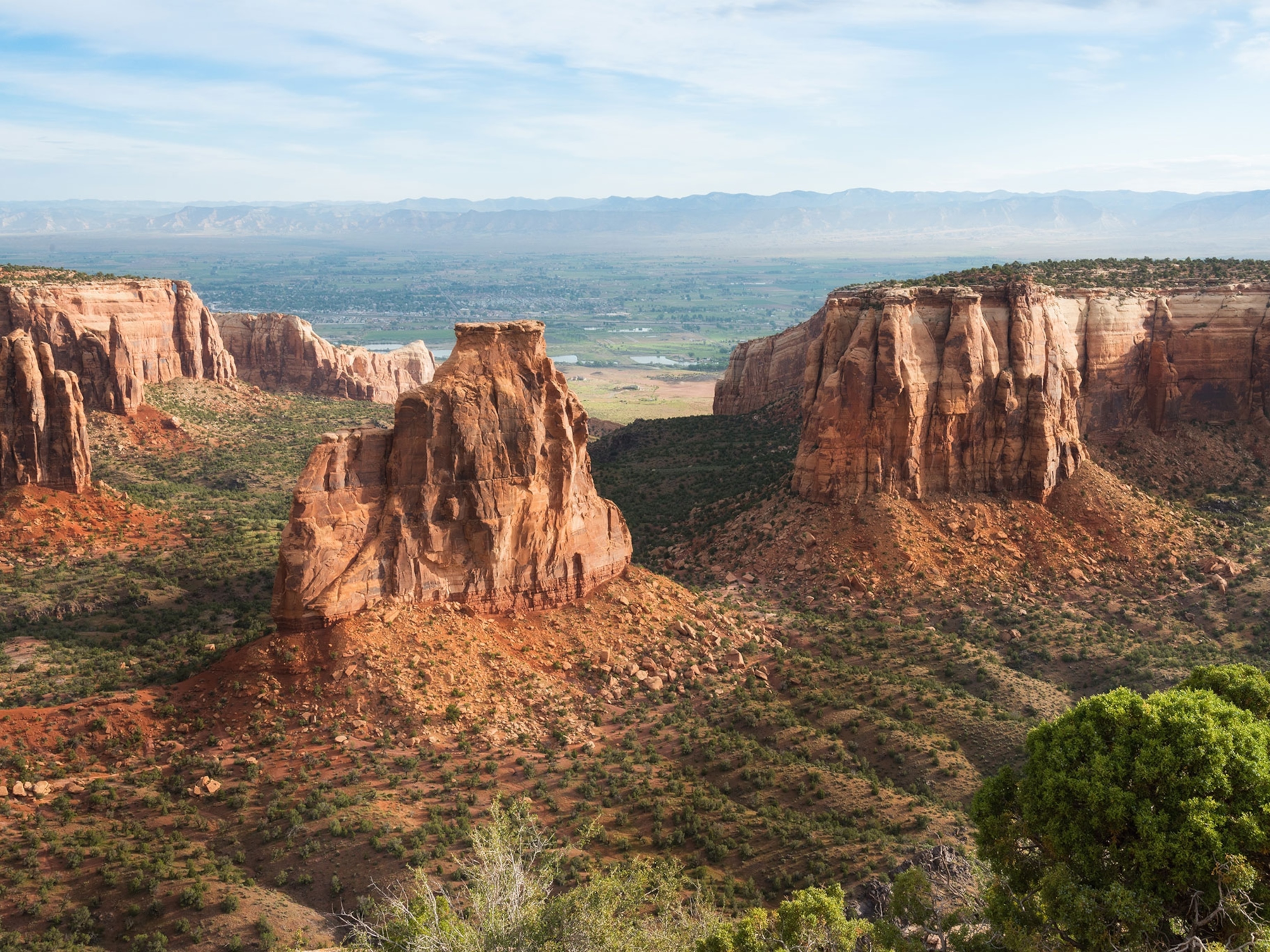How to Make a One-Day Loop in New Hampshire’s White Mountains
With trails to hike, mountains to climb, and railways to ride, White Mountain National Forest is the perfect spot for a summer adventure.
No one knows why New Hampshire’s White Mountains are called the White Mountains. It could be that the state’s granite-top peaks look white from afar or that they can be snowcapped for months. Around here, not many people bother with the why. These mountains are the heart of the state, home to the northeastern United States’ highest point, the world’s first cog railway, and hundreds of miles of hiking trails, including the Appalachian Trail.
Where to start? The White Mountains, after all, are big and busy. While popular stop-offs can draw crowds on nice days, there are plenty of ways to enjoy the park away from the hustle and bustle.
Here's the route I took, which can be traveled in a day. Much of the time I had the area to myself.
Frost Place, Franconia
The poet Robert Frost wrote of the “road not taken”—in what is apparently “the most misread poem in America” per the Paris Review. Fittingly, there was no sign pointing the way at the fork to the farmhouse he lived in or summered in for more than 20 years (according to Frost Place’s director’s assistant, it was stolen but soon to be replaced). I pulled off Route 116, guessed at the fork, then after a mile or two backtracked to find it. A hand-drawn sign read, “Parking.” My car was the only one in the grass lot.
I didn’t mind the chase. Frost Place was a great place to learn more about the San Francisco-born poet (and Dartmouth dropout) who once said, “I never knew how much of a Yankee I was till I had been out of New Hampshire a few months.” He called the New Hampshire and Vermont “yoke-fellows” the two best states. But while living in the latter, his mind roamed back here to New Hampshire, as it’s where he wrote New Hampshire, a sprawling Pulitzer Prize-winning poem in which he championed the Granite State while bad-mouthing several others.
Now a museum, his home—a farm of more than 40 acres wrestled from a local farmer after his early poetry success in England—includes a short “poetry trail” in the back that winds through woodland left to revert to its natural state. Poem excerpts dot the trail. Most moving is the view, which looks out toward Mount Lafayette and other mountains fully green this time of year.
Old Man of the Mountain Profile Plaza, Franconia Notch State Park
A few miles south in Franconia Notch State Park, along I-93, it’s possible to visit a memorial to a rock. The rock is the Old Man of the Mountain, a granite likeness of a man’s profile—made of five interlocking pieces actually—that once jutted out from the top of a hulking green mountain. You could see it from the highway until it fell in 2003. It became a state emblem and can be seen on highway signs and the state quarter.
At the small free museum, I learned locals knew for more than a century that the Old Man was in need of help. The first steel rods and turnbuckles to hold the rocky outcrop in place were set in 1916. Looking at photos in the small museum where an aerial tram ran up Cannon Mountain and fudge was for sale, the first thing I saw was that Old Man didn’t look that old. The 40-foot-tall face seemed more of a Dick Tracy, with jutting chin and rounded nose. But why fuss?
You can decide for yourself from the memorial, a short walk away at the shore of Profile Lake. Seven posts re-create the Old Man: Stand in the marker matching your height, squint, and line up the nooks on the end of the posts to bring back the Old Man on the distant mountain face.
Many combine a stop here with a tram ride up Cannon Mountain or rent a bike to go a few miles (mostly downhill) to Flume Gorge, a narrow granite gorge passing waterfalls. I didn’t have the time—plus the entry fee for the gorge is $16—so I opted for a shorter hike at the Basin-Cascade Trail nearby. The 30-foot-wide basin, swirling in rushing water, can be reached within five minutes.
Afterwards, the few people I saw dissipated as I headed into the woods and then alongside a tumbling stream. You can walk a little less than a mile along the rocky shoreline or on a leafy trail, past a jumble of falls, to reach Kinsman Falls.
The Kancamagus Highway
Most of the White Mountains loom east of I-93, and they’re reached by way of a 34.5-mile road known locally as “the Kanc.” One of the country’s first national scenic byways, it connects two touristy towns, Lincoln/North Woodstock and Conway, where you can find bear shows and water parks.
I headed east from North Woodstock with a to-go sandwich and time to make a couple stops. Within 20 minutes, I reached Kancamagus Pass in heavy fog, but the view quickly cleared as the road twisted through the trees to the east. I stopped at popular Sabbaday Falls: From my parking place, it was an easy 15-minute walk to the falls, named by early settlers after the Sabbath day.
Another 15 minutes east, I reached the Albany Covered Bridge, which leads to the start of the three-mile Boulder Loop Trail. Fellow hikers passed every five or 10 minutes, but most of the steadily rising walk was mine alone. After 50 minutes, I reached a series of glacial boulders jutting over a green canopy of trees and looking to the far-off Sandwich Range. It was, in fact, a good place to stop and eat a sandwich.
Incidentally, Kancamagus, or “fearless one,” was a leader of the Penacook Confederacy, a Native American alliance here, but after skirmishes with settlers, he relocated his tribe into northern New Hampshire and Canada in the late 1600s.
The Presidential Range and Cog Railway
For hikers, the Presidential Range of the White Mountains looms as the biggest challenge east of the Rockies. Lots of familiar names are here: Washington (the tallest), Adams, Jefferson. (Even Franklin Pierce gets a peak, but only because he’s the lone U.S. president to hail from New Hampshire.)
I lacked the time—and the conditioning—to take on a full route, but there were two quick ways to reach the top of Mount Washington: by driving up the Auto Road (the toll is $29 a car) or the world’s first cog railway ($69 round-trip). I took the cog.
Opened in 1869, this rack railway, the train’s toothed wheels interlocked to the rails, takes almost an hour to climb past a jumble of rock to the top. Appalachian Trail hikers wave as you pass (A Walk in the Woods author Bill Bryson did the same route); some hikers climb up in three or four hours then ride the railway down.
Clouds drifted in as I reached the top, then disappeared, unveiling wide views of the Presidential Range and beyond. That’s not always the case. A museum in the center at the top brags that the peak of Mount Washington is home to “the world’s worst weather.” Winds of 231 miles an hour have been recorded here, along with temperatures of minus 47 degrees Fahrenheit.
One wall in the museum mapped out where all the casualties on the mountain occurred, beginning in 1849. It’s “meant not as a morbid curiosity, but as a pointed reminder—this can be a dangerous place!” the sign read. Sometimes the weather isn’t to blame. In 1906, Alexander Cusick of Vermont died while descending the mountain—on a slide board on the railway.
I was happy for the cog.
How to Do This Trip
The best places to stay on this loop are around Crawford Notch or the town of Franconia. I enjoyed the Horse & Hound Inn, which has great dinners too.
If you want to take the cog railway, book ahead. I had to book my ride a couple days in advance.
If parking areas along the Kancamagus Highway are full, you can park off the shoulder of the road in many places, but only where the shoulder is large enough to park safely.






